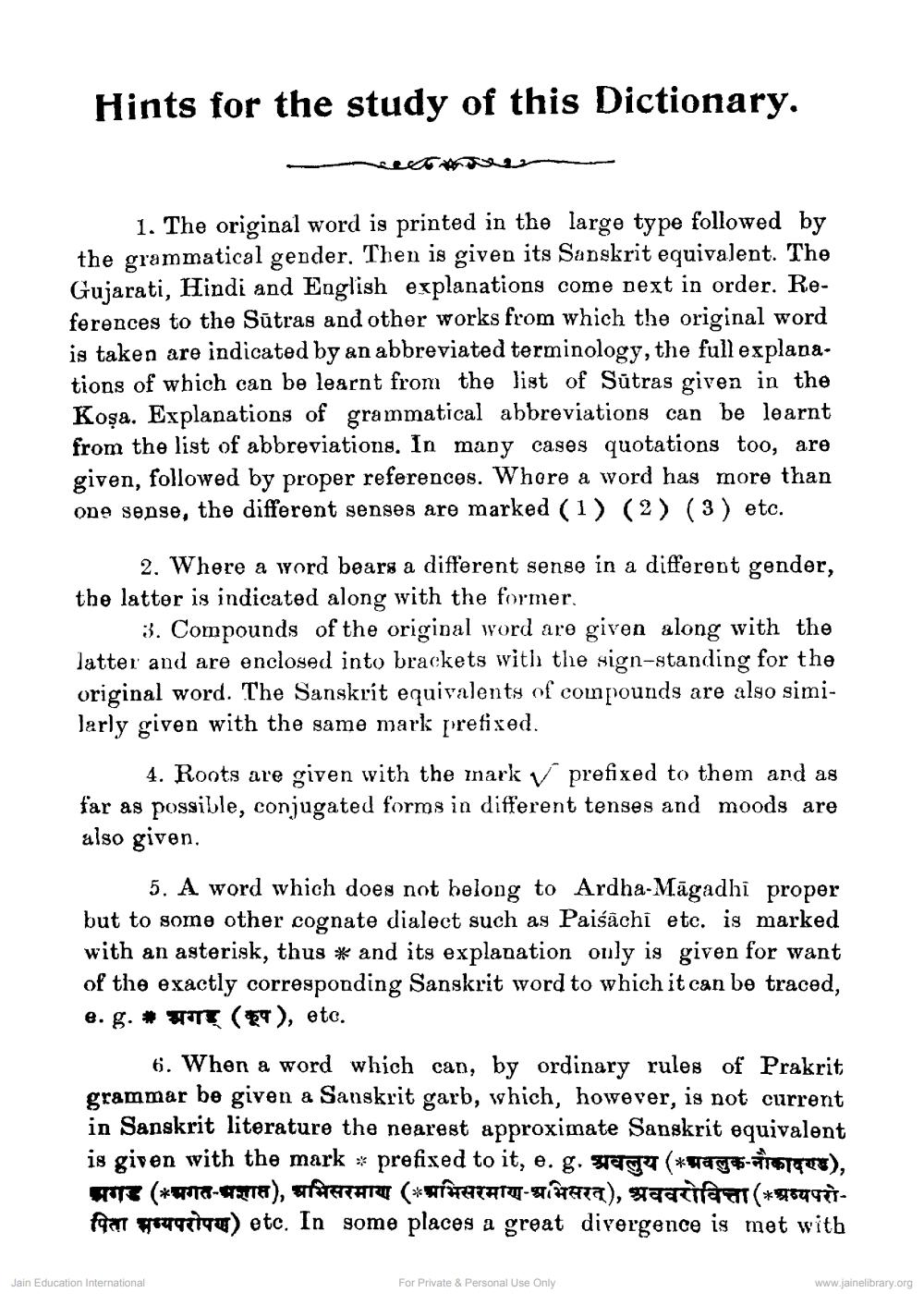________________
Hints for the study of this Dictionary,
1. The original word is printed in the large type followed by the grammatical gender. Then is given its Sanskrit equivalent. The Gujarati, Hindi and English explanations come next in order. References to the Sūtras and other works from which the original word is taken are indicated by an abbreviated terminology, the full explanations of which can be learnt from the list of Sūtras given in the Koşa. Explanations of grammatical abbreviations can be learnt from the list of abbreviations. In many cases quotations too, are given, followed by proper references. Where a word has more than one sense, the different senses are marked (1) (2) (3) etc.
2. Where a word bears a different sense in a different gender, the latter is indicated along with the former.
3. Compounds of the original word are given along with the latter and are enclosed into brackets with the sign-standing for the original word. The Sanskrit equivalents of compounds are also similarly given with the same mark prefixed.
4. Roots are given with the inark ✓ prefixed to them and as far as possible, conjugated forms in different tenses and moods are also given.
5. A word which does not belong to Ardha-Māgadhi proper but to some other cognate dialect such as Paiśāchi etc. is marked with an asterisk, thus * and its explanation only is given for want of the exactly corresponding Sanskrit word to which it can be traced, e. g. * HITET (ET), etc.
6. When a word which can, by ordinary rules of Prakrit grammar be given a Sanskrit garb, which, however, is not current in Sanskrit literature the nearest approximate Sanskrit equivalent is given with the mark * prefixed to it, e. g. siCT (*naga-1147ae), AT (**T-HITA), af ECHTU (*ATHATATT-91wata), waarilaren (*969 Tìfacer sugriau) etc. In some places a great divergence is met with
Jain Education International
For Private & Personal Use Only
www.jainelibrary.org




